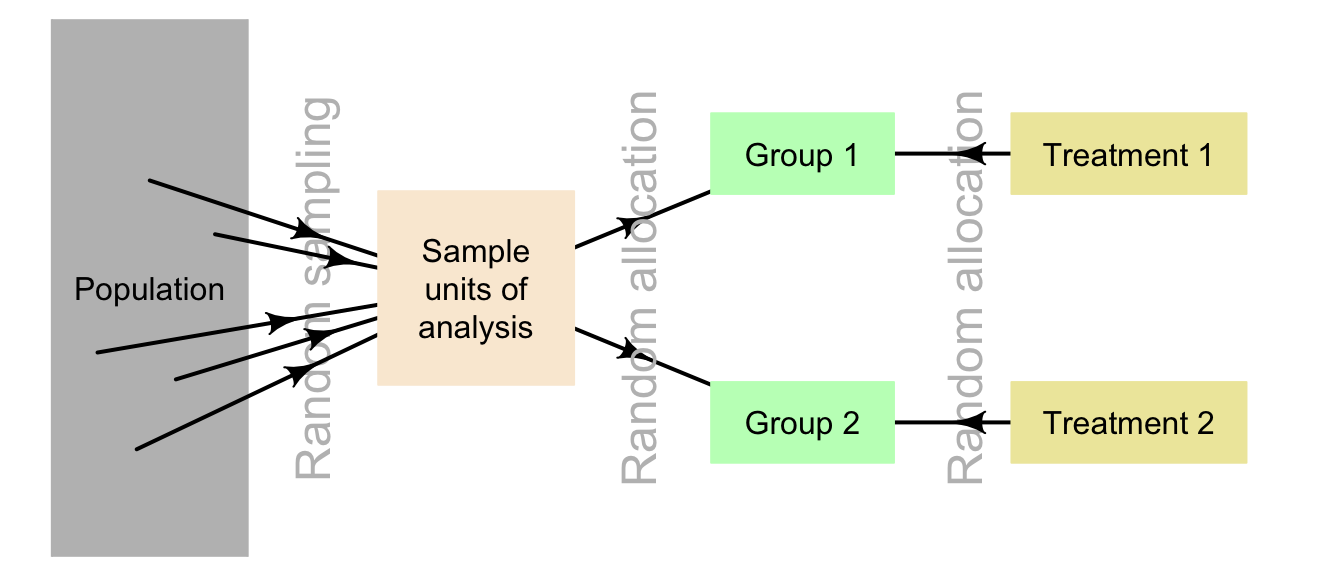7.3 Random allocation vs Random sampling
Random sampling and random allocation are two different concepts (Fig. 7.4), that serve two different purposes, but are often confused:
- Random sampling allows results to be generalised to a larger population, and impacts external validity. It concerns how the sample is found to study.
- Random allocation tries to eliminate confounding issues, by evening-out possible confounders across treatment groups. Random allocation of treatments helps establish cause-and-effect, and impacts internal validity. It concerns how the members of the chosen sample get the treatments.

FIGURE 7.4: Comparing random allocation and random sampling